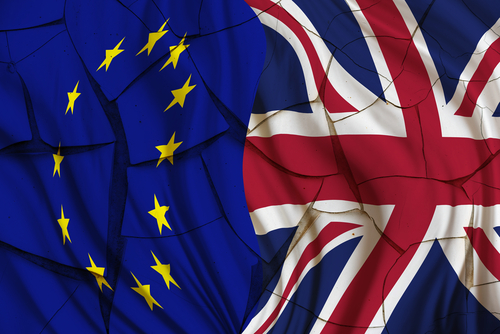
Monetary Policy & Inflation | Rates | UK

Monetary Policy & Inflation | Rates | UK
This article is only available to Macro Hive subscribers. Sign-up to receive world-class macro analysis with a daily curated newsletter, podcast, original content from award-winning researchers, cross market strategy, equity insights, trade ideas, crypto flow frameworks, academic paper summaries, explanation and analysis of market-moving events, community investor chat room, and more.
The Bank of England (BoE) hiked the bank rate by 50bp to 4.0% as expected, with seven MPC members backing the move, and two (external members Tenreyro and Dhingra) voting for no hike. The policy statement provided strong support for my belief that they are now done with hikes (dropping reference to ‘forceful monetary policy response’). Additional hikes are conditional on inflation worsening versus their November forecasts.
The updated monetary policy report (MPR), based on the current bank rate, provided a relatively uncontroversial base case, including:

Hawkish caveats to the statement were wrapped into the comments around the overshoots in domestic drivers of inflation: i.e., wage growth and services inflation. These phenomena are related, with wages encompassing a significant proportion of services business costs, and hence being the more important of the two. It takes no great leap of logic to see that the conditionality on further hikes will, to a large extent, be pointed at labour market outturns.
While this may sound like a relatively modest requirement (data to disappoint), it is important to note this is relative to the MPC’s base assumptions on the labour market, which I find to be overly optimistic (i.e., their forecast for unemployment rises too slowly). Given the fact that much of the labour market tightness has been participation rate driven, my expectation for some time has been that once the labour market starts to turn it will be faster than the BoE is expecting. Historic precedent supports this (Chart 3).

For wage growth, timely HMRC data suggests the momentum will continue to build (Chart 4). While this may, at first, point towards likely positive surprises ahead, and hence more tightening, this may not be the case. The BoE notes signs of labour market loosening and wage growth easing, with the rate of growth stabilising on a three-month basis, and survey data suggesting further moderation ahead. But, more importantly, they explicitly state that their base case assumption (i.e., what will need to be beaten to justify more hikes) is:
‘broadly consistent with the results of the latest Agents’ pay survey, … just under 6%’
In other words, the recent record trajectory of pay growth does not need to change much at all to remain within the BoE base-case (Chart 5). The data release on 14 February (December pay & unemployment, January claimant count) will be particularly important.

A hike in March is now conditional on services inflation and/or wage growth overshooting versus BoE projections. Given that BoE projections remain relatively optimistic on labour market, this is a tail risk in my view. Given the willingness to pause, if hikes were needed, such hikes would probably be at the lower rate of 25bp. Consequently, market pricing for 18bp in March, and 33bp until terminal rate looks overly hawkish. I see further value in positioning for a lower BoE terminal rate (4.0%), and further GBP weakness (particularly in EUR/GBP, which should break 0.90).
As I had expected, the ECB hiked by 50bp and struck a strongly hawkish tone, emphasising the probability of a 50bp March hike and the likelihood of more hikes thereafter. President Lagarde may have conceded that inflation and economic activity had slowed (albeit the latter slowed less than ECB forecasts), but she took care to repeat the arguments for further hiking: strong core inflation, the generosity and breadth of current fiscal plans, and the rising trajectory for wages. ECB implied assumptions that fiscal policy will be pared back soon seem optimistic. Lagarde’s messaging on the policy path could hardly have been clearer: they need to raise significantly into restrictive levels, 50bp in March is their ‘strong intent’, and they ‘won’t be there [done with hiking] in March’.
In this context, it is difficult to comprehend the strong rates bid that has been seen across Europe in the aftermath of the announcement. The market came to the table on the back of a pretty unremarkable FOMC, seeming to ignore Chair Powell’s assertion that more hikes were needed. Perhaps, in that context, the market was expecting Lagarde’s tone to leave no room for uncertainty. Even so, the EGB and gilts bid that followed on from the press conference has gone far beyond that seen in the US (Chart 6).

Meanwhile, the decline in 2Y EUR swaps (-16bps) was the largest single day decline since the 27 October 2022 ECB meeting (Chart 7). At that time, I highlighted the lack of justification in the dovish move, 2Y swaps rose 40bp over the following week. Now, (as then), Bloomberg may have played a role in the move, stressing Lagarde’s admission that ‘intent’ for a March 50bp hike was not a 100% done-deal. In my view, this is a weak argument given the context – recall that Lagarde has previously been burned by bad forward guidance (which I was critical of then).
In conclusion, the ECB decision and press conference add further weight to my expectation that the ECB will end up hiking to at least 3.5% and has done nothing to change my expectation for periphery EGB weakness.
I see value paying 2Y EUR swaps, with a target of 3.3% (to be reassessed if hit), and going outright short 10Y BTP with a target of 4.5% (-8bps 3mth carry & roll).
Spring sale - Prime Membership only £3 for 3 months! Get trade ideas and macro insights now
Your subscription has been successfully canceled.
Discount Applied - Your subscription has now updated with Coupon and from next payment Discount will be applied.